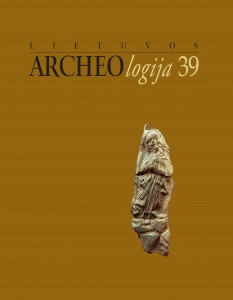Senojo Panevėžio gyventojai XVI–XVII a.: bioarcheologinė analizė
Inhabitants of Old Panevėžys in the 16th–17th centuries: bioarchaeological analysis
Author(s): Šarūnas Jatautis, Ieva MitokaitėSubject(s): Archaeology
Published by: Lietuvos istorijos institutas
Keywords: bioarchaeology; paleodemography; paleoepidemiology; Old Panevėžys; Grand Duchy of Lithuania
Summary/Abstract: The article is intended to present and analyze bioarchaeological data from the cemetery of Old Panevėžys (Senasis Panevėžys) (dated to the 16th–17th centuries) in terms of paleodemographical and paleoepidemiological aspects. The material is also compared with large simultaneous Lithuanian skeletal collections from rural, town and urban cemeteries. The relationship between life and death was very close in the community of Old Panevėžys, i.e. due to high mortality rates, the population was characterized by high numbers of young and low numbers of older individuals, respectively. Sex differences in the risk of mortality were fluctuating depending on age. Females in reproductive period had a higher risk of mortality; while those who survived it had a lower risk than contemporary males. Based on demographical and height data, community of Old Panevėžys was more similar to rural rather than to urban populations. In addition, skeletal indicators of biological health capacitated for some plausible explanations for patterns of morbidity and mortality.
Journal: Lietuvos archeologija
- Issue Year: 2013
- Issue No: 39
- Page Range: 97-120
- Page Count: 24
- Language: Lithuanian

